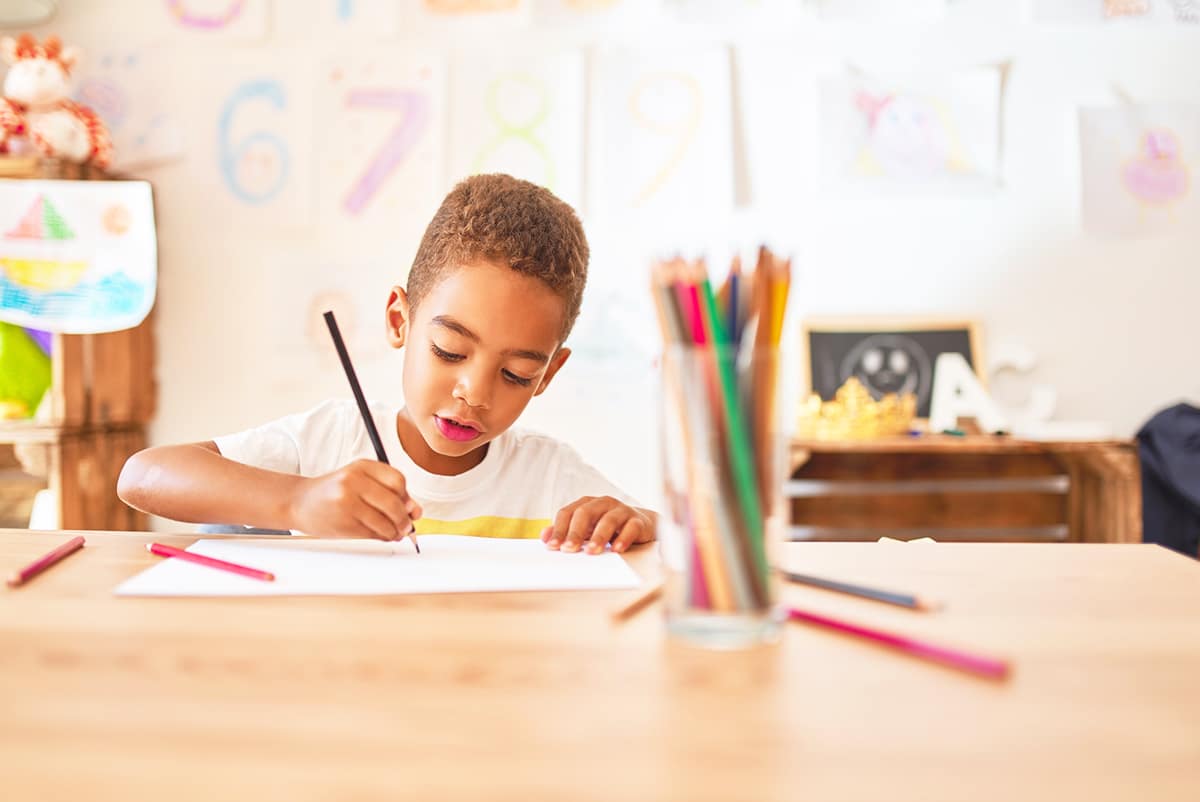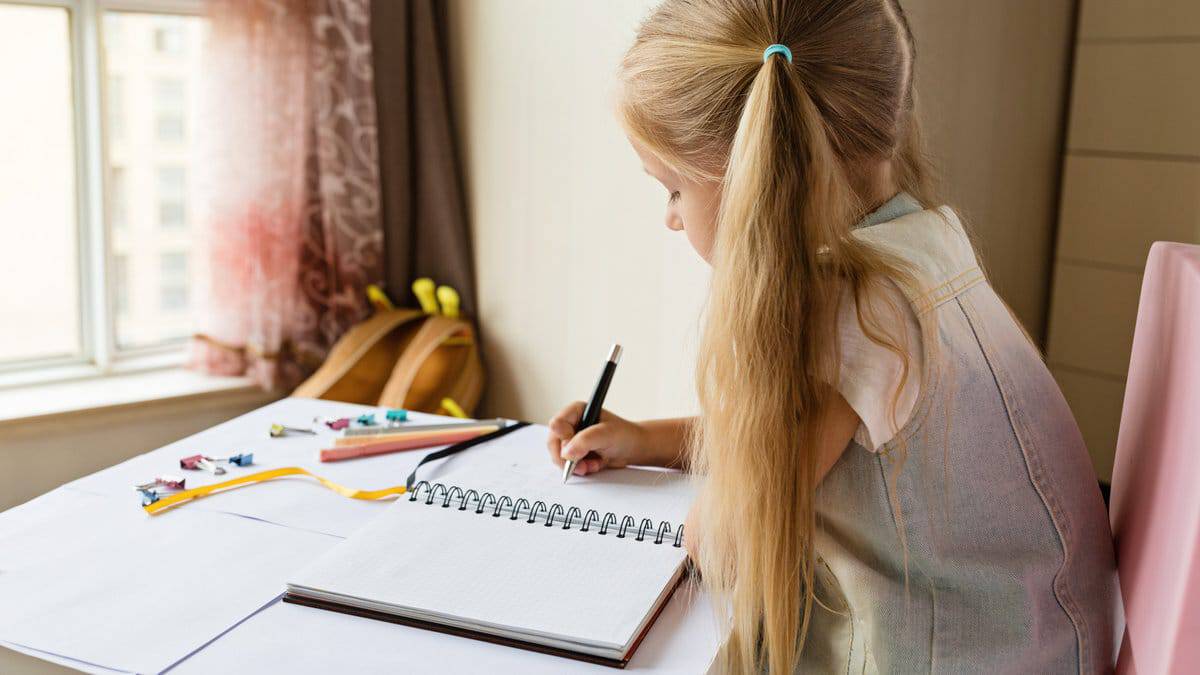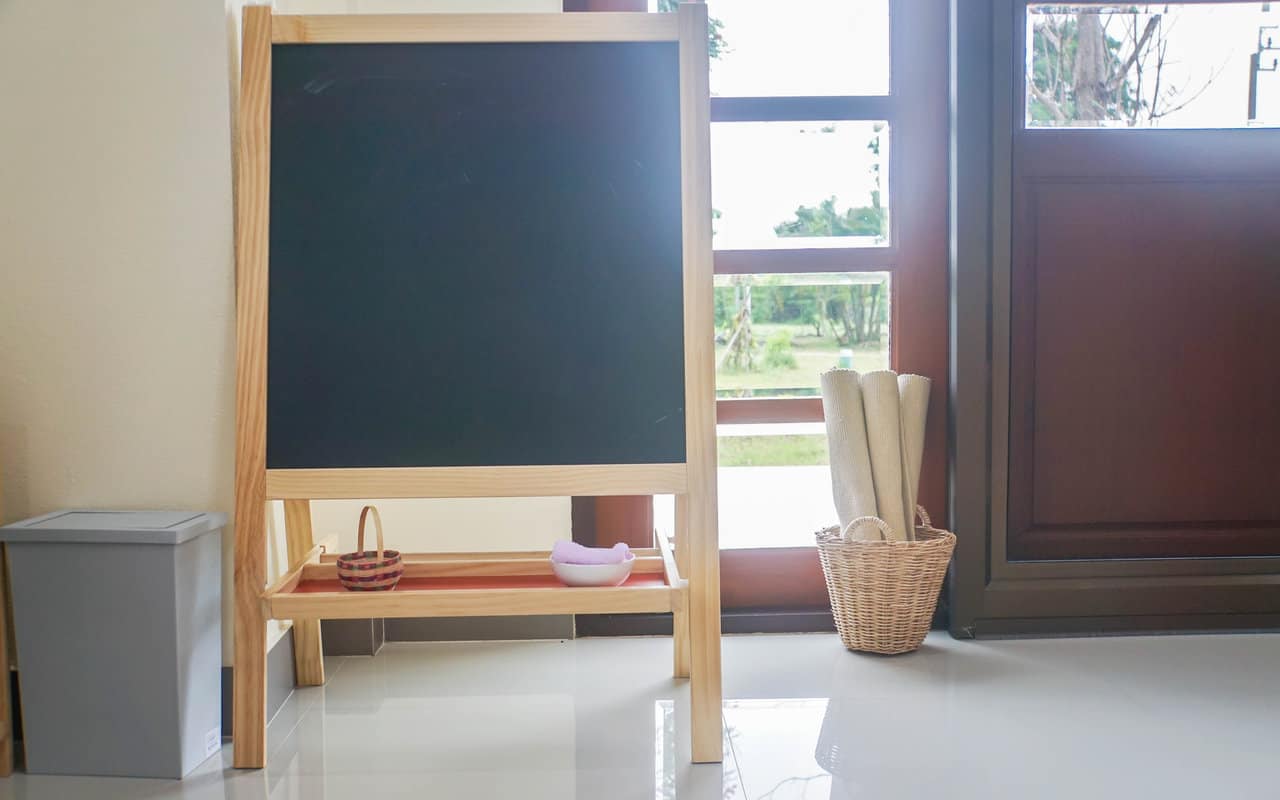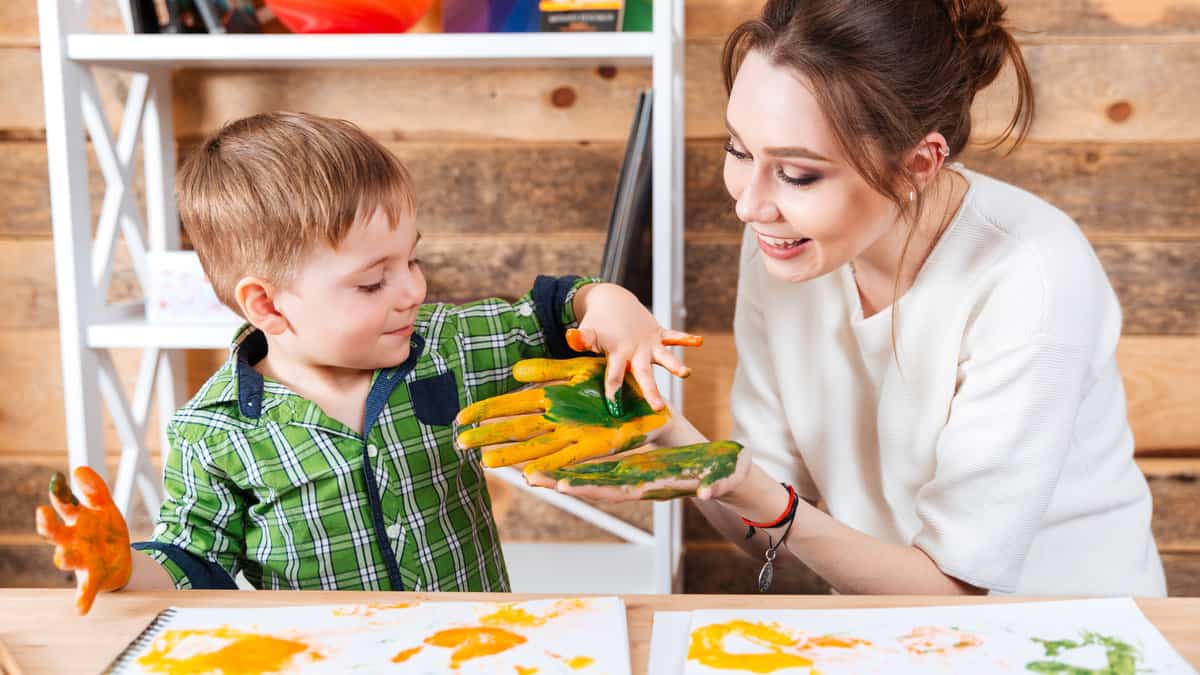Find the things you need for your kindergarten homeschool curriculum!
Are you thinking about teaching your kindergartener from home?
That’s awesome!
I can’t say that I homeschool my twins but with the current state of the world they have spent a lot of time learning from home – and I learned a thing or two for setting them up for success!
But providing your little one with an enriched educational experience involves more than creating a learning space.
Following a kindergarten homeschool curriculum is imperative in ensuring that they learn what they are supposed to learn and reach academic objectives.
Yet, when you homeschool, you have an amazing opportunity to personalize their learning by incorporating activities and lessons that grab their interest and expand their knowledge!
Are you ready to get started? Here is everything you will need to set up a successful kindergarten homeschool curriculum:
Kindergarten Homeschool Curriculum
If you reach out to your local government’s educational department, they will be able to provide you with a kindergarten homeschool curriculum.
But before you use this, it’s important to understand what it may contain and how you can implement it into your child’s at-home learning.
1. Homeschool Subjects
The subjects taught in kindergarten vary from province to province and from state to state.
In order to find out which ones are required by your area, do a Google search for educational curriculums for your location.
Or you can check out daily curriculum workbooks like this one for early childhood.
Otherwise, there are some subjects that are commonly taught at this grade-level that should be including in your kindergarten homeschool curriculum, such as:
- Math
- Language Arts:
- Science
- Art
- Physical Education
One of the benefits of teaching your children at home is that you can also add any subjects you want! If you feel like a certain topic would benefit and interest your little one, throw it in there.
Also, in addition to figuring out which subjects you should be teaching, it’s important to find out if your area requires standardized testing for kindergarten homeschoolers.
This way, you can make sure you cover everything while teaching your child at home.
2. Homeschool Schedule
Once you figure out which subjects you need to teach in your kindergarten homeschool curriculum, it’s time to make a schedule!
While homeschooling does provide you with the opportunity to be flexible with your time during the day, you should be spending around two hours per day teaching your little one.
You can choose whether to teach in the morning or afternoon – whatever works for your schedule and your child! You can even try different times to see which part of the day works best.
And, instead of teaching a little bit of each subject per day, you can split the subjects up during the week.
For instance, you can teach math on Monday, language arts on Tuesday, science on Wednesday, etc.
As you’re figuring this out, create a homeschooling schedule to keep yourself on track. Just remember that this can change as you find a way to meet your child’s unique needs.
3. Kindergarten Learning Objectives
I did talk a little bit about finding out if there are standardized tests in your area but it’s also important to keep track of our little one’s learning objectives as you teach them from home.
Kindergarten is such an important grade because it lays the foundation for what your child will be learning throughout their academic career.
Here are some objectives your child may be expected to achieve:
- Identify letters both uppercase and lowercase.
- Understand and demonstrate letter sounds.
- Be able to recall details from books.
- Demonstrate the ability to sequence events.
- Identify frequency and sight words.
- Solve simple addition and subtraction problems.
- Identify numbers.
Again, these expectations can vary depending on where you live.
Check out your local government’s educational site to find out what the specific learning objectives are.
Kindergarten Homeschool Classroom

Now that you know what you are supposed to teach your child, it’s time to set up the perfect learning space!
Keep in mind that your child’s kindergarten homeschool space doesn’t have to be state-of-the-art or super fancy.
Here are the basics you should have:
4. Workspace
When it comes to setting up your homeschool kindergarten, it’s important to have a workspace or desk setup for your little ones to help them feel relaxed and productive.
Before you go into a panic about setting up the perfect desk, remember that your setup is going to depend on how much space you have to work with.
It doesn’t have to be anything large and fancy. In fact, when my twins are learning from home, I set them up on small folding kids’ tables! It gives them ample room to work without taking up a ton of space in my home.
Your little one’s workspace can be as simple as having them sit at the kitchen table. When it comes to kindergarten, kids in school don’t sit at individual desks – they gather around small tables.
So think about tablespace in your home, folding tables, or small child-sized tables. It’s also helpful if you can sit with them to support them in their learning!
5. Storage
While you don’t need a whole room full of supplies to teach your kindergartner at home (which I’ll get to in the next section of this article), it helps to keep everything organized with some storage.
The best way to do this is to make sure your materials are sorted and easy to access during lessons.
For smaller spaces, you can opt for a rolling cart or small bookshelves to accommodate your supplies.
No matter where you choose to set up your kindergarten homeschool, it’s all about maximizing your space with storage.
6. Wall Space
If you’ve ever set foot into a kindergarten classroom, you’ll notice that every wall surface is covered with colorful printouts and images.
Kids are visual learners, so your walls are the perfect place to add educational visuals such as calendars, schedules, and lesson prompts.
And you don’t have to plaster every surface of your home! You can use a whiteboard to set up lesson prompts for the day as well as a velcro calendar – both of which don’t take up a lot of space.
7. Decorations
Decorating your homeschool space isn’t a necessity but it can be fun! You can make it look cool by decorating based on a theme such as calm colors or vintage vibes.
If you’re worried your little one may be overwhelmed or distracted by bright colors, choose printables and decorations that use muted pastels.
To go for a more vintage vibe, like the classrooms we sat in as kids, look for bright and fun colors.
Don’t stress out about decorations and certainly don’t spend an arm and leg doing so!
Kindergarten Homeschool Supplies

Kindergarten homeschool supplies are essential to your curriculum, but they don’t have to break the bank.
Here’s what you’ll need to get started.
8. Printer and Laptop
Unless you want to spend your homeschooling budget on buying curriculums that are already printed, you should have a good printer to print out worksheets.
Reliable color printers are not expensive!
And neither are good laptops, which you’ll need to find worksheets and printables.
Also, many classrooms have computers that students can use so a laptop is a perfect way to give your child access to educational games and videos.
9. Basic Supplies
Of course, you’re going to need some basic supplies for your kindergarten homeschool curriculum.
Here is a list of what you should stock up on:
- Pencils and erasers
- Paper (white paper for printing, construction paper for crafts, lined paper for writing)
- Scissors
- Glue
That’s it! However, you’re probably going to need additional supplies when it comes to games, science, arts, and crafts.
Let’s look at those.
10. Learning Games
Teaching the kindergarten homeschool curriculum won’t work if you are expecting your child to sit, listen, and learn all day.
That’s why having some learning games on hand will make the experience more exciting for your little one!
Here are some games you should grab:
- Money Games
- Sight Word Bingo
- Apples to Apples
You can make games yourself, check out your local dollar store, or pick them up on Amazon.
11. Science Supplies
How fun it is to learn science from a book or blackboard? Not very.
Here are some ideas for fun science supplies you can include in your kindergarten homeschool curriculum:
- Kitchen Items (baking soda, vinegar, borax, corn starch, food coloring, etc.)
- Nature Exploration Kit
- Slime Kit
Again, these supplies don’t have to be expensive!
12. Arts & Crafts
For arts and crafts at a kindergarten level, the academic focus is typically on holding crayons, using scissors, etc.
Beyond that, your imagination is your limit! Stock up on some crayons, pencil crayons, markers, paint, paintbrushes, and playdough.
You can even use recyclable items around your home such as paper towel rolls and egg cartons that you can turn into fun creations.
Kindergarten Homeschool Resources

Implementing a kindergarten homeschool curriculum is all about being creative and using whatever resources you can find to enrich the experience.
Here are some freebies you can use for at-home learning.
13. Homeschooling Sites
Homeschool sites are a goldmine for finding free resources and actual curriculums. Check out these ones:
The best part is that you don’t have to stick to just one site!
Use a variety to really fill out your curriculum.
14. YouTube Channels
So while the websites are to help you out as your child’s teacher, YouTube comes to the rescue by providing your child with a visual learning experience.
They’re also great for including physical activity into your homeschooling day!
Check out these channels:
Using YouTube is also a great way to give yourself a breather during the day.
15. Books and Guides
While browsing the internet for amazing resources is super useful, you can also refer to books and guides – and you don’t have to bust your budget to do it!
Check out your local library to borrow books for your kindergarten homeschool curriculum. You can also check out sites like Bibliomania and Gradesaver for resources as well.
16. Printables and Worksheets
Printables and worksheets are a must-have for your curriculum!
They are a great way to stimulate your child visually, create schedules, and keep track of their progress as they are learning.
Here are some great places to find printables and worksheets:
Now you know why you need that printer!
Kindergarten Homeschool – You Got This!
Yes, it seems like a lot to get started on teaching your kindergartener from home but, once you get the ball rolling, you and your little one are going to have so much fun!
Just focus on the learning objectives and keeping your child engaged. The rest will start to flow naturally.
Now it’s your turn – Are you thinking about homeschooling?
What are you going to include in your curriculum?
Let me know in the comments!



